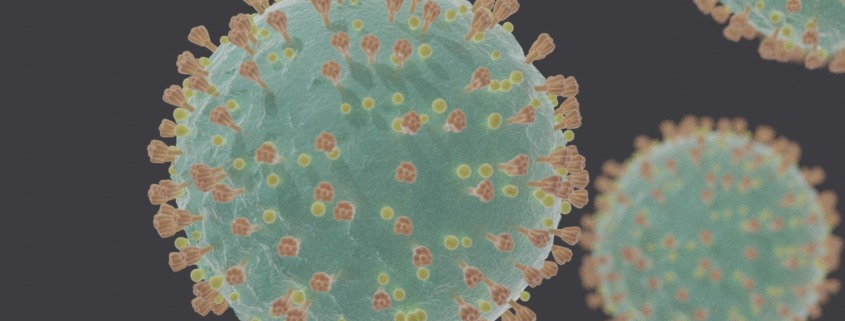INTRODUCTION: Shingles, or herpes zoster (HZ), is an acute, viral infection that occurs after the reactivation of the varicella-zoster virus (VZV). The virus usually remains dormant within dorsal root ganglia after the virus’s primary infection presentation in the form of varicella. HZ is thought to appear when the immune system is under stress due to a recent illness, emotional stress, immunosuppression, or even exposure to excessive sunlight (UV rays). HZ has been observed in numerous patients during the COVID-19 viral outbreak over the last year. Data is being accumulated that points to COVID-19 infections triggering the occurrence of HZ.
DISCUSSION: As reported by Elsaie et al1, it has been confirmed by many that a COVID-19 infection is accompanied by a reduction in lymphocytes, monocytes, and eosinophils, along with noted reductions of CD4/CD8 T cells, B cells, and natural killer cells. Different mechanisms for lymphocyte depletion and deficiency have been speculated among COVID-19 patients. It has been postulated that the functional damage of CD4+ T cells may predispose patients with COVID-19 to severe disease. Such immune changes can render a patient more susceptible to developing shingles by reactivating VZV, which could be a sign of undiagnosed COVID-19 infection in younger age groups, according to the authors in this report.
Two earlier reports discussed HZ among COVID-19 diagnosed patients. Shors et al2, presented a case of a patient who developed HZ during a course of COVID-19 infection. This patient also developed severe acute herpetic neuralgia despite the early initiation of antiviral therapy. Elsaie et al3, described two cases of patients who presented with HZ before later being diagnosed with COVID-19 infection. In the earlier report, Elsaie et al1 reported a pregnant female who presented with HZ during the course of a COVID-19 infection. They speculated that HZ may be a marker for COVID-19 infection, especially in younger patients.
In another report, Saati et al4 presented a case of an immunocompetent middle-aged male who had COVID-19 in combination with HZ. They postulated that there may be an association between COVID-19 and reactivation of VZV in the form of HZ. In patients who present with HZ in the current pandemic of COVID-19, they believe it would be prudent to adhere to taking precautions until the diagnosis of COVID-19 is excluded.
CONCLUSION: There are many reports, in addition to those presented here, which show a correlation between COVID-19 infection and reactivation of VZV, leading to HZ. A possible explanation of HZ in COVID-19 patients may be related to the decrease in total lymphocyte count in these patients. Lymphopenia occurs as a result of the direct infection of lymphocytes with SARS-CoV-2, activation-induced cell death, and impairment to antiviral responses. As various cutaneous manifestations of COVID-19 disease are increasingly being reported, clinicians should be on the alert for HZ, which may be a complication or an indicator of COVID-19 infection, particularly in younger patients.
REFERENCES:
1. Elsaie, M.L., Eman A. Youssef, and Hesham A. Nada. 2020. Herpes Zoster May Be a Marker for COVID-19 Infection During Pregnancy. Cutis, 106:318-320. https://doi.org/10.12788/cutis.0133
2. Shors, A.R. 2020. Herpes zoster and severe acute herpetic neuralgia as a complication of COVID-19 infection. JAAD Case Rep. 2020;6:656-657. https://doi:10.1016/j.jdcr.2020.05.012
3. Elsaie, M.L., Eman A. Youssef, and Hesham A. Nada. 2020. Herpes zoster might be an indicator for latent COVID-19 infection. Derma Therapy 33 e13666. https://doi.org/10.1111/dth.13666
4. Saati, A., Faisal Al-Husayni, Afnan A. Malibari, Anas A. Bogari, and Maher Alharbi. 2020. Herpes Zoster Co-Infection in an Immunocompetent Patient with COVID-19. Cureus 12(7): e8998.



